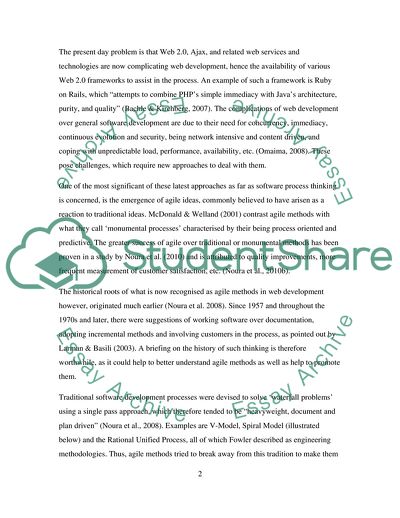Cite this document
(Introducing the Agile Method for Web Development in Saudi Arabia Literature review Example | Topics and Well Written Essays - 2250 words, n.d.)
Introducing the Agile Method for Web Development in Saudi Arabia Literature review Example | Topics and Well Written Essays - 2250 words. https://studentshare.org/information-technology/1746381-literature-review-agile-method-for-web-development
Introducing the Agile Method for Web Development in Saudi Arabia Literature review Example | Topics and Well Written Essays - 2250 words. https://studentshare.org/information-technology/1746381-literature-review-agile-method-for-web-development
(Introducing the Agile Method for Web Development in Saudi Arabia Literature Review Example | Topics and Well Written Essays - 2250 Words)
Introducing the Agile Method for Web Development in Saudi Arabia Literature Review Example | Topics and Well Written Essays - 2250 Words. https://studentshare.org/information-technology/1746381-literature-review-agile-method-for-web-development.
Introducing the Agile Method for Web Development in Saudi Arabia Literature Review Example | Topics and Well Written Essays - 2250 Words. https://studentshare.org/information-technology/1746381-literature-review-agile-method-for-web-development.
“Introducing the Agile Method for Web Development in Saudi Arabia Literature Review Example | Topics and Well Written Essays - 2250 Words”. https://studentshare.org/information-technology/1746381-literature-review-agile-method-for-web-development.


